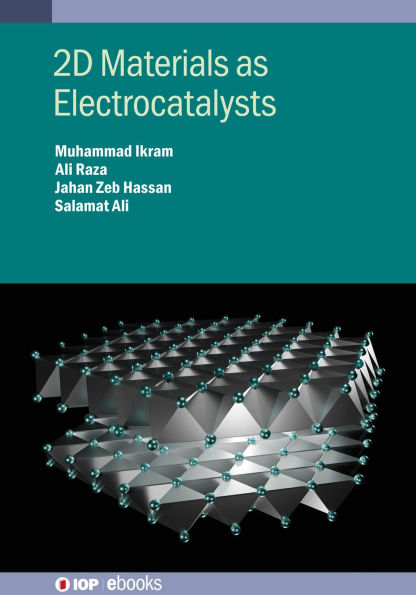With the discovery of graphene, 2D materials have emerged as some of the most promising candidates for heterogeneous electrocatalysts owing to their unique physicochemical and electronic properties. This research and reference text covers the latest advances in the area of 2D material-based electrocatalysts for electrocatalytic processes, including the key principles, pros and cons, synthesis, tuning, performance, challenges, and future opportunities. Intended for researchers and graduate students, this will be the first book on 2D materials as electrocatalysts and will enable readers to understand the mechanisms behind the electrolysis and synthesis of 2D electrocatalysts. It will also be beneficial for industry experts working with the HER, ORR, and CO2 reduction processes for large-scale usage.
Key Features:
- Covers the latest advances in the area of 2D material-based electrocatalysts for electrocatalytic processes
- Includes the key principles, pros and cons, synthesis, tuning, performance, challenges and future opportunities
- Explores the hydrogen evolution reaction (HER), oxygen reduction reaction (ORR), and CO2 reduction
- Enables readers to understand the mechanisms behind the electrolysis and synthesis of 2D electrocatalysts
With the discovery of graphene, 2D materials have emerged as some of the most promising candidates for heterogeneous electrocatalysts owing to their unique physicochemical and electronic properties. This research and reference text covers the latest advances in the area of 2D material-based electrocatalysts for electrocatalytic processes, including the key principles, pros and cons, synthesis, tuning, performance, challenges, and future opportunities. Intended for researchers and graduate students, this will be the first book on 2D materials as electrocatalysts and will enable readers to understand the mechanisms behind the electrolysis and synthesis of 2D electrocatalysts. It will also be beneficial for industry experts working with the HER, ORR, and CO2 reduction processes for large-scale usage.
Key Features:
- Covers the latest advances in the area of 2D material-based electrocatalysts for electrocatalytic processes
- Includes the key principles, pros and cons, synthesis, tuning, performance, challenges and future opportunities
- Explores the hydrogen evolution reaction (HER), oxygen reduction reaction (ORR), and CO2 reduction
- Enables readers to understand the mechanisms behind the electrolysis and synthesis of 2D electrocatalysts

2D Materials as Electrocatalysts
300
2D Materials as Electrocatalysts
300Related collections and offers

Product Details
| ISBN-13: | 9780750352918 |
|---|---|
| Publisher: | Institute of Physics Publishing |
| Publication date: | 12/23/2024 |
| Series: | IOP ebooks |
| Sold by: | Barnes & Noble |
| Format: | eBook |
| Pages: | 300 |
| File size: | 17 MB |
| Note: | This product may take a few minutes to download. |
